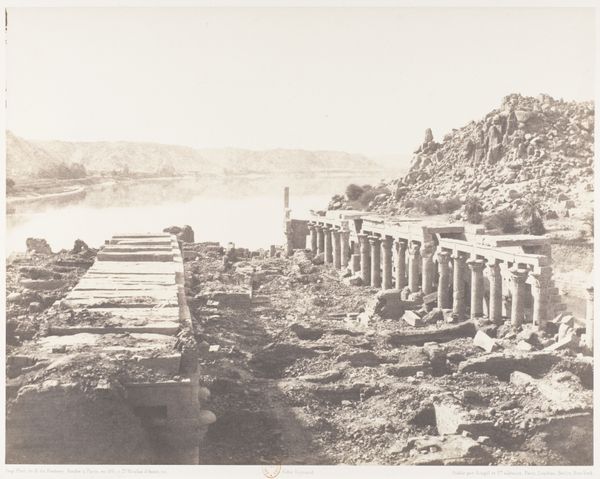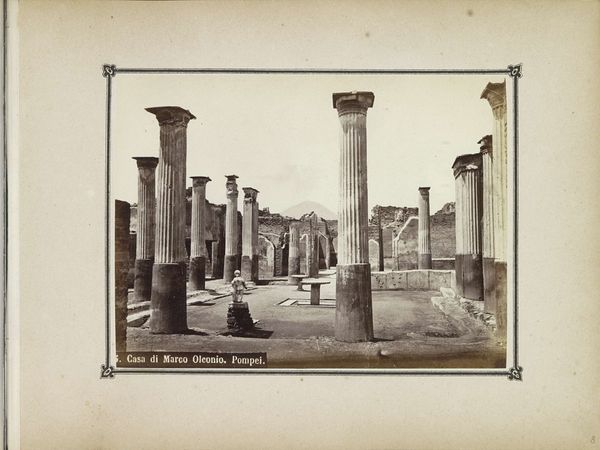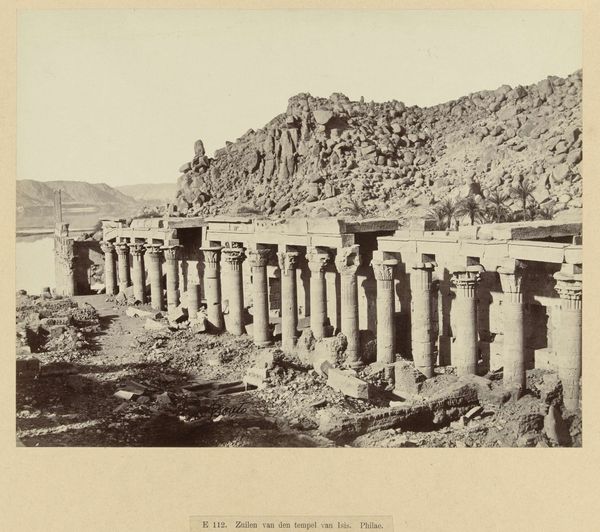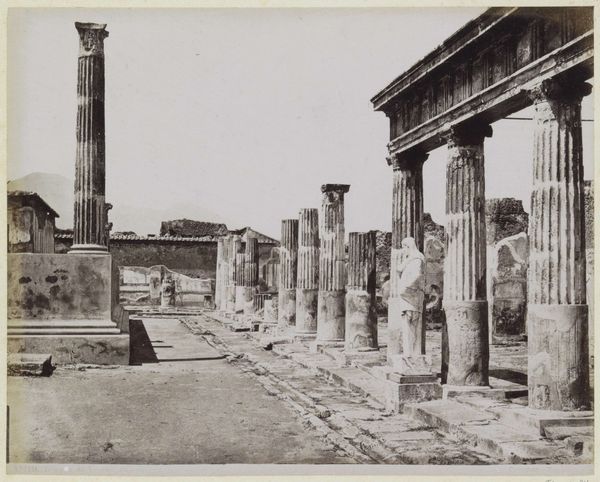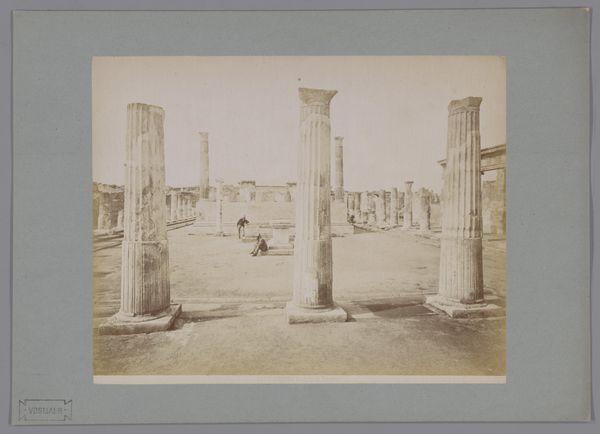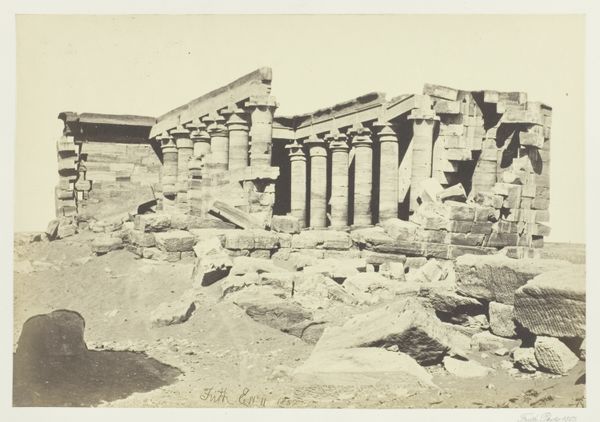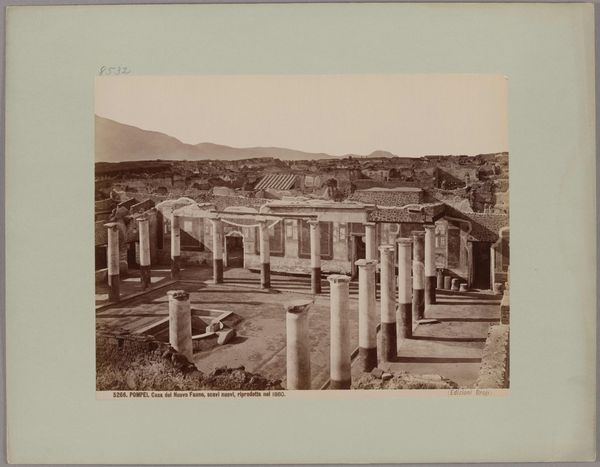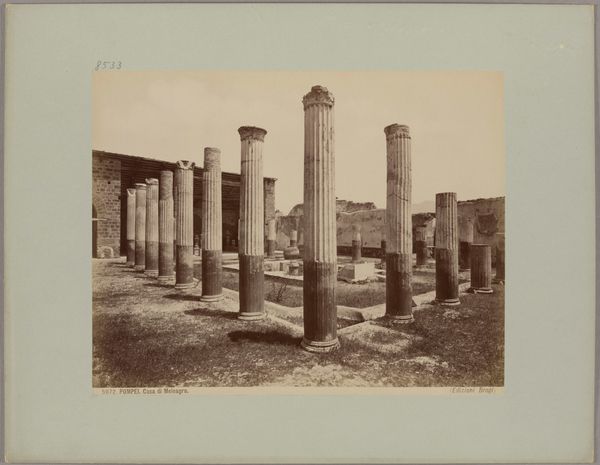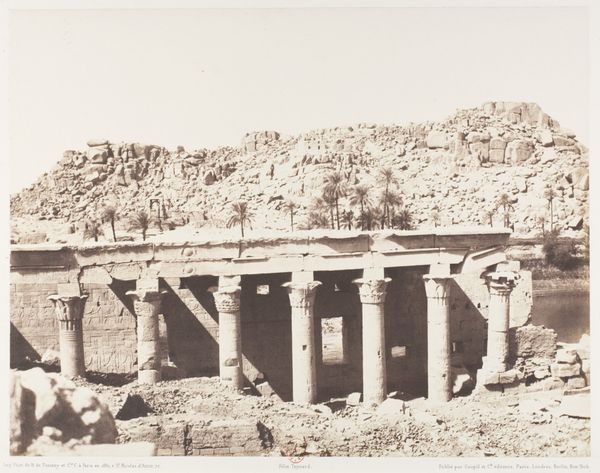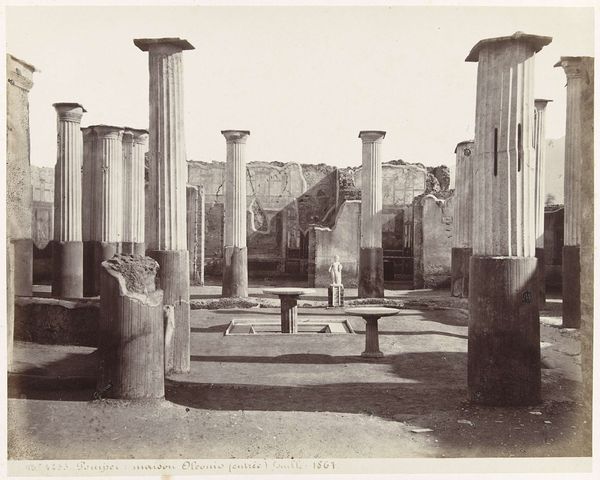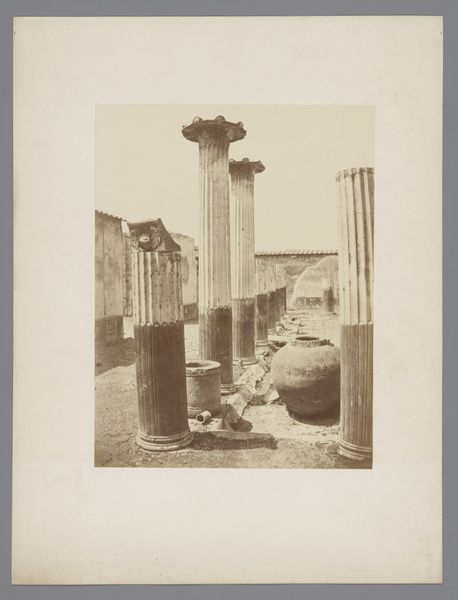
photography, sculpture
#
statue
#
sculpture
#
greek-and-roman-art
#
landscape
#
photography
#
ancient-mediterranean
#
column
#
sculpture
#
cityscape
#
statue
Dimensions: height 200 mm, width 251 mm
Copyright: Rijks Museum: Open Domain
Curator: Looking at this print by Giorgio Sommer, taken between 1870 and 1900, you see, well, a stage set of sorts, columns and sculptures at a wall in Pompeii. Editor: My first impression is one of ghostly grandeur, of stillness, really. The grey scale enhances a sense of time suspended and a civilization utterly paused. Curator: Indeed. It is a deliberate framing of history. Sommer wasn't just documenting; he was curating a view, shaping how we imagine Pompeii. The stark light and shadows heighten the drama, wouldn’t you agree? Editor: Absolutely. It makes me wonder about the colonial gaze here. It's easy to romanticize ruins. Did Sommer intend a purely aesthetic rendering, or was he engaging with Pompeii as a cultural artifact claimed for European viewers? Curator: I lean towards the latter. The very act of isolating these classical fragments—columns, statues, a segment of wall—suggests a desire to possess them visually. Photography in that era was intrinsically linked to colonialism, displaying conquered or unearthed treasures for consumption. Editor: And that consumption plays into this overwhelming sense of quiet. What once buzzed with the chaos and color of daily life has become a silent study, devoid of people yet undeniably populated by implied power dynamics. Curator: Think, too, about the technology. Photography was still fairly young when Sommer was working, yet he wields it to transport viewers across time and space, making Pompeii accessible to those who might never set foot there. Editor: Almost cruelly accessible. To experience a lost city mediated through the cool calculation of a lens changes the experience into a strange, sanitized one. It becomes history on display, flattened into monochrome perfection. Curator: Despite the problematic undercurrents, Sommer's composition is quite arresting. The careful arrangement of elements creates a balanced image, inviting contemplation. Editor: Yes, that’s true, and perhaps therein lies the complicated truth of the artwork. To balance aesthetic wonder with awareness is crucial. What began as an artist’s impression, is inevitably interwoven with cultural contexts that we as viewers must also come to acknowledge.
Comments
No comments
Be the first to comment and join the conversation on the ultimate creative platform.

